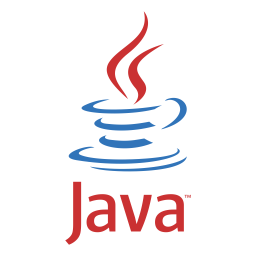Notice
Recent Posts
Recent Comments
Link
| 일 | 월 | 화 | 수 | 목 | 금 | 토 |
|---|---|---|---|---|---|---|
| 1 | 2 | 3 | 4 | 5 | ||
| 6 | 7 | 8 | 9 | 10 | 11 | 12 |
| 13 | 14 | 15 | 16 | 17 | 18 | 19 |
| 20 | 21 | 22 | 23 | 24 | 25 | 26 |
| 27 | 28 | 29 | 30 | 31 |
Tags
- 어노테이션
- Eclips
- 메소드
- 생성자
- 오버로딩
- 배열
- 메서드
- 예외처리
- JavaScript
- AWT
- struts2
- Java
- 이클립스
- 전화걸기
- layout
- 안드로이드
- JSP
- Android
- OGNL
- 클래스
- 국제화
- oracle
- Menu
- paint
- mybatis
- Spring
- HTML
- 기본
- 에러페이지
- Graphic
Archives
- Today
- Total
note
struts2 <s:set /> 본문

Set.jsp
<%@ page language="java" contentType="text/html; charset=UTF-8"
pageEncoding="UTF-8"%>
<%@ taglib prefix="s" uri="/struts-tags" %>
<!DOCTYPE html PUBLIC "-//W3C//DTD HTML 4.01 Transitional//EN" "http://www.w3.org/TR/html4/loose.dtd">
<html>
<head>
<meta http-equiv="Content-Type" content="text/html; charset=UTF-8">
<title>set tag</title>
</head>
<body>
<s:set name="someProperty" value="%{'actionValue'}" />
<s:set name="someProperty" value="%{'pageValue'}" scope="page" />
<s:set name="someProperty" value="%{'requestValue'}" scope="request" />
<s:set name="someProperty" value="%{'sessionValue'}" scope="session" />
<s:set name="someProperty" value="%{'applicationValue'}" scope="application" />
action : <s:property value="someProperty"/><br/>
page : ${someProperty}<br/>
request : <s:property value="#request.someProperty"/><br/>
session : <s:property value="#session.someProperty"/><br/>
application : <s:property value="#application.someProperty"/><br/>
</body>
</html>
[JSP/스트럿츠2] - struts2 if / else if / else 태그 예제(OGNL표현식) EL / OGNL 차이점
의 OGNL 표현식에 대해
OGNL표현식
jsp
EL이 가지고 오는 영역 page, request, session ,application 4개의 영역
struts2
OGNL이 가지고 오는 영역 - Action , page, request, session ,application
5개의 영역
표현법은 ${}가 아닌 %{}
getter를 사용했을때 action에 저장이 되어 있고 request에도 저장이 되어 있다
액션 외의 영역에 접근할때는 #을 붙인다 (액션영역은 그냥표기)
그래서 OGNL은 Action에 접근하기 용이하고
EL은 각 영역에 접근하기 용이함(page, request, session ,application)
value="%{'actionValue'}"이표현 방법은 actionValue의 String객체로 인식함데이터 처리를 Action에서 하는것이 좋다
그래서 display방법이 쉽기 때문
jsp에서는 데이터 처리를 안하는것이 좋긴한데
arraylist에 객체를 뽑는것은 jsp에 할 수 없이 표기ㅣ 해야된다
그럴땐 iterator를 사용하는것이 좋습니다
'JSP > Struts2' 카테고리의 다른 글
| struts2 / myBatis 게시판 (0) | 2012.02.27 |
|---|---|
| struts2 데이터베이스 연동 (0) | 2012.02.23 |
| struts2 국제화 (0) | 2012.02.23 |
| struts2 itertator (0) | 2012.02.23 |
| struts2 OGNL 표기 Append / Merge / Date (0) | 2012.02.23 |



